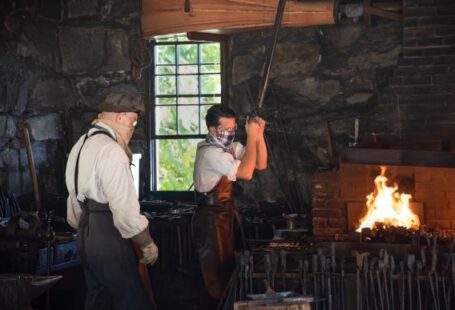Imagine being able to take hot soup or coffee with you on a long hike, or keep your lunch warm during a day at the office. Thanks to the invention of the thermos, this is now possible. The thermos, also known as a vacuum flask, is a remarkable invention that has revolutionized the way we transport and preserve heat. In this article, we will explore the history and mechanics of the thermos, and how it has become an essential accessory for people on the go.
The Birth of the Thermos
The story of the thermos starts in the 19th century with Scottish physicist and chemist, Sir James Dewar. In 1892, Dewar invented the first vacuum flask, which he called the Dewar flask. It consisted of a double-walled glass vessel with a vacuum between the walls to minimize heat transfer. The inner wall was coated with a reflective material to enhance heat retention. Dewar’s invention was initially intended for scientific experiments involving low-temperature gases, but it soon caught the attention of others.
The Commercialization of the Thermos
Recognizing the potential for commercial applications, two German glassblowers, Reinhold Burger and Albert Aschenbrenner, obtained the rights to Dewar’s invention and began producing it for the public. In 1904, they introduced the first commercial thermos under the brand name “Thermos.” This revolutionary product quickly gained popularity, and the term “thermos” soon became synonymous with vacuum flasks.
How Does a Thermos Work?
The key to the thermos’ ability to preserve heat lies in its construction. The double-walled design, with a vacuum between the walls, acts as an insulator, preventing heat transfer by conduction and convection. Additionally, the inner wall is coated with a reflective material, such as silver or aluminum, which reduces heat loss through radiation. The combination of these features creates a highly efficient heat-preserving container.
The Evolution of the Thermos
Over the years, the thermos has undergone several improvements and innovations. One significant advancement was the introduction of a screw-top lid, which replaced the cork stopper used in early models. This new design ensured a tight seal, further reducing heat loss. Another important development was the use of stainless steel for the outer casing, making the thermos more durable and resistant to damage.
The Modern Thermos
Today, thermoses come in various shapes and sizes, catering to different needs and preferences. Some thermoses are designed specifically for beverages, with features like built-in handles or spouts for easy pouring. Others are designed for food, with wider openings and compartments for storing meals. There are even thermoses equipped with heating elements that allow you to warm your food or drinks on the go.
The Thermos in Everyday Life
The thermos has become an indispensable item for many people, enabling them to enjoy hot beverages or meals wherever they are. Whether it’s a cup of coffee during a morning commute or a bowl of soup during a camping trip, the thermos provides the convenience of enjoying warm food and drinks on demand. It has also become a popular choice for parents wanting to send their children to school with a hot lunch.
Innovation Continues
The invention of the thermos has revolutionized our ability to preserve heat on the go. Its unique design and insulating properties have made it an essential item for many people. As technology continues to advance, we can expect further innovations in thermos design and functionality, ensuring that we can continue to enjoy the convenience of hot food and drinks wherever we may be.
In conclusion, the thermos has come a long way since its invention by Sir James Dewar in the 19th century. From its humble beginnings as a scientific apparatus, it has transformed into a must-have accessory for anyone wanting to preserve heat on the go. Its efficient insulation and durability have made it a trusted companion for outdoor enthusiasts, office workers, and parents alike. The thermos is a testament to the power of human ingenuity and our constant desire for convenience and innovation.





